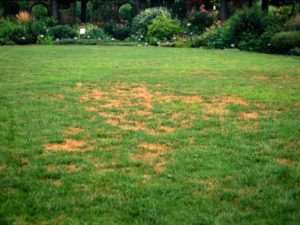Wondering what to do with your lawn during the snowy season? Or do you have BROWN PATCHES!
While it may seem like it’s your lawn’s time off, being aware of some of the effects of winter weather on your lawn is a good idea.
- Snow mold? For sure. A pesky fungus that appears after the snow melts, snow fungus comes in two forms:
- Gray snow mold: the most common, and the most easily remedied since it only infects the leaf or blade.
- Pink snow mold: A worse effect of snow, infecting the crown of the plant or lawn.
Remedy: Raking the grass to loosen the mold and encourage growth is a good first step. The best remedy is dry, warm air, so keep your lawn uncovered during the first few weeks of spring.
- Brown patches. Common in many regions of the country despite temperature differences, brown patches are a simple disease affecting lawn that isn’t watered properly.
- When the snow melts in the spring, many homeowners see brown patches in their lawns, especially with ryegrass, tall fescue, and Kentucky bluegrass. These patches can be a few inches to a few feet in diameter
Remedy: The best remedy is time to recover, and the slow introduction of the usual mowing and watering routine. Preventative measures can be taken next fall, by removing thatch and leaves before the first snow. Don’t use too many nitrogen-rich fertilizers; sometimes these can make brown patches worse.
If you would like to speak with someone about your yard, dont hesitate to call us for your free analysis! 417-350-6722


